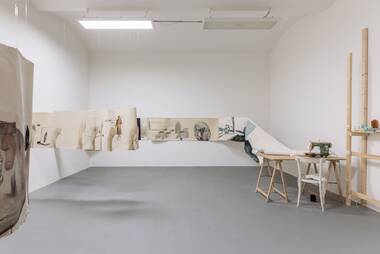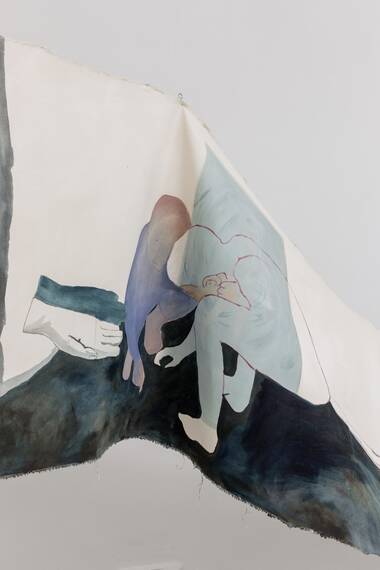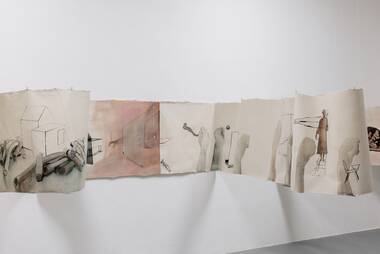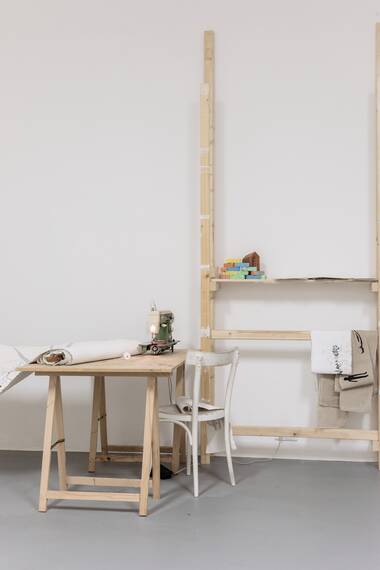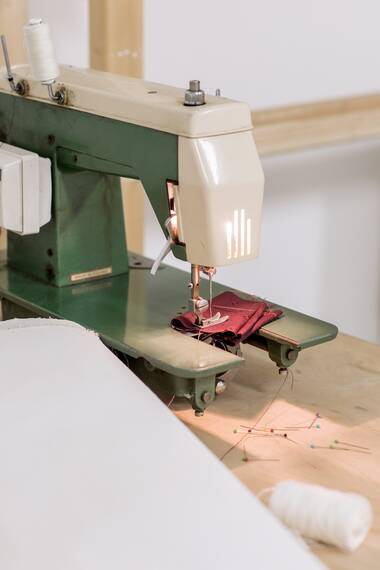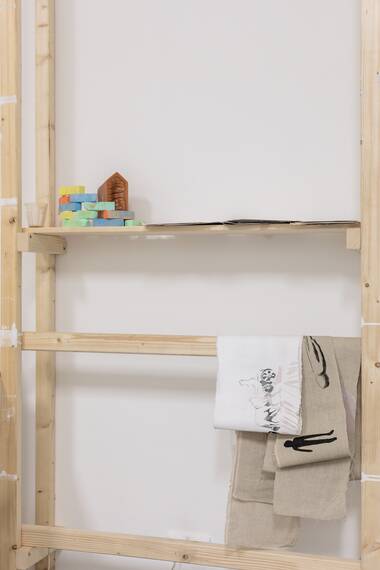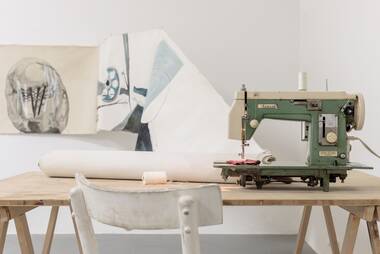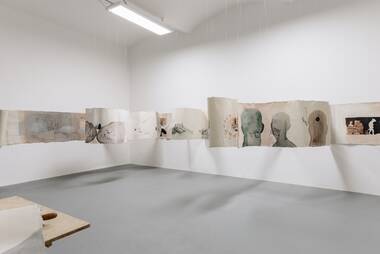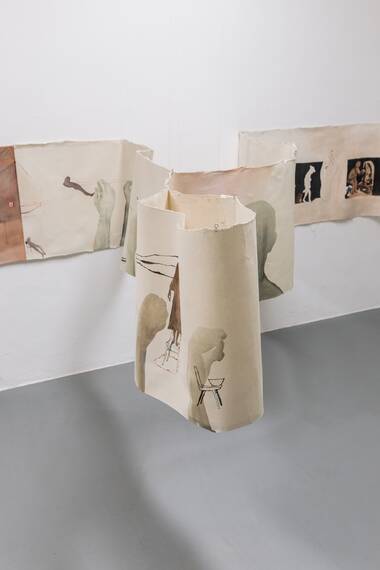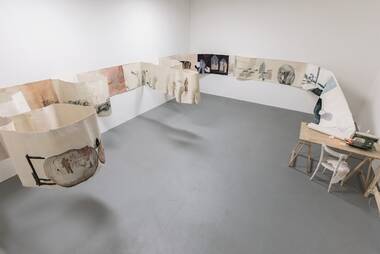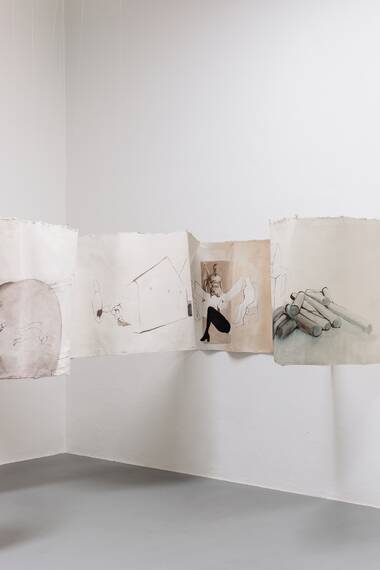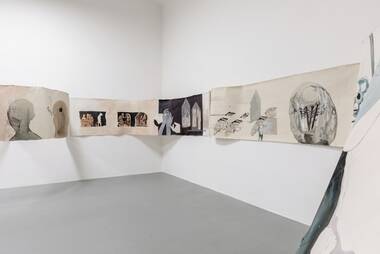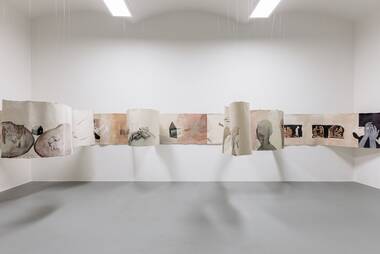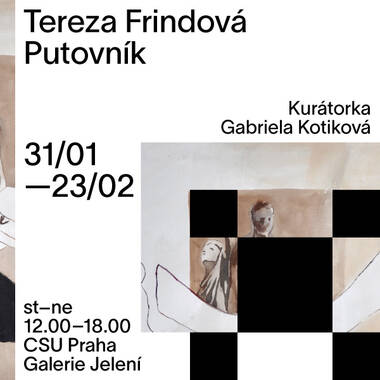Tereza Frindová
The Wanderer
31. 1. – 23. 2. 2025
opening: 30. 1. 2025 from 6 pm
curator: Gabriela Kotiková
GK: The exhibition presents a series of large-format drawings inspired by fragments and symbols from childhood, linked to the imaginary figure of the Wanderer. Can you tell me how did this idea come about?
TF: The Wanderer was originally created as an instruction guide. I often visualize simple daily activities and create instructions for them - some I draw in my notebook; others are just in my head. The Wanderer was created as one of these instructions. It was meant to be a kind of a guide, a framework to help me navigate the topic. The problem with many of the instruction guides is the time in which they are set, they often take place in the future tense "You plug the cable into the socket." or "Press the button." For me it was important to create something that would fit into the context of the past. With that context, the instructions make sense to me.
Does this figure symbolize anyone in particular, or is it a glimpse into our shared history?
At the moment, I tend to think of the Wanderer as a specific person, probably because I've been working with him for a long time. Originally, however, I saw him more as a figure through which we can reflect on our common past, as well as future.
In your words, "The wanderer follows his own decisions, does not submit to convention, crosses borders, rarely greets passers-by and certainly does not wear slippers."
.... not many people like wearing slippers.
There are also references to the time of totalitarianism and communism in a series of these drawings. Are these deliberate associations with a time in our particular history?
I think it's more of a personal expression of the desire for freedom, a little manifesto of individualism, as someone called it. In the drawings I try to capture an atmosphere that reflects inner feelings and desires for independence, rather than dealing directly with specific historical symbols. This is not to say that I use these symbols unconsciously, on the contrary. But the goal was not to react only a few decades back. The goal was to learn and find a critical perspective in myself and to find an instructions guide to thinking critically about anything in life across time.
In this project, you have chosen a form of presentation that resembles a studio or workspace. I find it interesting that the drawings are in a different situation than just hanging on the wall. Also, the way of unrolling the large rolls of canvas on which they are painted is interesting. We never know where the story ends and what is hidden in the twisted roll...
It's meant to symbolize the constant need to learn. It's a process that never ends – just as the canvas can keep expanding.
The program of the Jeleni Gallery is possible through kind support of Ministry of Culture of the Czech Republic, Prague City Council, State Fund of Culture of the Czech Republic, City District Prague 7,
GESTOR – The Union for the Protection of Authorship
Media partners: ArtMap, artalk.cz, jlbjlt.net, ArtRevue, Radio 1
